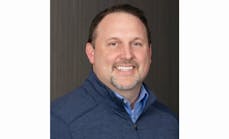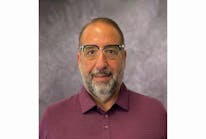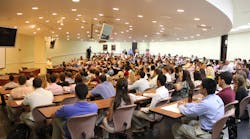Security Q&A: Johnson Controls on how higher ed is tackling threats both physical and cyber
Campus safety and security has never been more critical. Balancing new technology to expand security operations is just as important as campus comfort when it comes to attracting and retaining students. Russell Garcia (RG), director of higher education for North America at Johnson Controls, and Jason Rosselot (JR), director of global product security at Johnson Controls, answer questions about the challenges of implementing new security measures, and how campuses are keeping students and staff safe today.
Q: What are some of the biggest security challenges higher ed campuses face today?
RG: At an administrative level, security and campus safety impact the brand of the institution and its ability to enroll students. Today’s campuses are challenged with having the appropriate amount of resources and talent to protect the campus so it creates the feeling of an open environment. An open environment is conducive to learning, especially when students and staff feel safe. Campuses must balance simple threats like theft and vandalism with more complex threats, like the possibility of an active shooter or environmental disaster.
JR: Integration is a challenge, too. Campuses are now integrating physical security systems with cybersecurity components while working alongside local law enforcement. Careful planning and collaboration is needed so the right people are notified and can respond appropriately and on time.
Q: As cybersecurity and automation become part of the conversation, what shifts have you seen regarding key stakeholders?
JR: Leadership is now more involved because they want to better understand the types of security threats on campus. We are seeing more presidents, chancellors, CFOs and higher administrators getting involved in discussions and briefings. Local law enforcement is coming in to help with planning, too, including first responders. The biggest change is how IT comes into play for almost every project. The director of IT is involved in more discussions and is more responsible for security and cybersecurity. Cybersecurity and automation are making security a group effort.
Q: How has the addition of Tyco security products given you the ability to have deeper conversations around these issues?
RG: The addition of Tyco is a big help. Tyco is made up of people who are helping define fire codes and protect some of the most sensitive facilities around the world. We’re now able to work within more levels of a customer’s infrastructure. It enables a stronger focus on unique security challenges so we can craft a bundled solution that best protects a campus, regardless of their challenges.
Q: What are the biggest concerns or risks related to building automation and cybersecurity?
JR: One of the biggest concerns is how automation and cybersecurity interact with mass notification systems and how to organize and mobilize a response to an incident. Questions come up about how to handle these notifications without severely interrupting campus operations and student learning. Another concern is how to balance human supervision and automated supervision – and which will create more efficiency and speed.
Q: What best practices can clients follow to help prevent a breech or cyberattack on their campus?
RG: An important best practice is having a clearly defined process: how to define threats, how to recognize when a threat is occurring and how to address the threat. Once we determine answers to those questions, we move to what solutions Johnson Controls can provide, including the management of that solution. Having partners that can take on that responsibility helps campuses focus on goals while still ensuring staff and student security.









